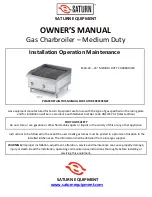
10.3 Standard inspection and maintenance operations
10.3.1 Checking the combustion
Combustion is checked by measuring the O
2
percentage in the flue gas
discharge pipe.
For more information, see
Checking/adjusting the combustion, page 36
Performing the full load test, page 36
Control and setting values for O2 at full load, page 36
Performing the part load test, page 37
Control and setting values for O2 at part load, page 37
10.3.2 Venting the heating system
Any air in the boiler, pipes or valves must be vented in order to prevent
annoying noises that may be generated during heating or when drawing
water.
1. Open the valves of all the radiators and/or underfloor heating circuits
connected to the system.
2. Set the room thermostat to the highest possible temperature.
3. Wait until the radiators are warm.
4. Shut down the boiler.
5. Wait approximately 10 minutes, until the radiators feel cold.
6. Bleed the radiators. Work from the lowest to the highest.
7. Open the venting valve with the bleed key, keeping a cloth pressed
against the vent.
Warning
The water may still be hot.
8. Wait until water comes out of the venting valve and then close the
venting valve.
9. Start the boiler.
Important
After the power is switched on, the boiler always runs through an
automatic venting program lasting approx. 3 minutes.
10. After venting, check that the water pressure in the system is still
adequate. If necessary, top up the water level in the heating system
11. Adjust the room thermostat or temperature control.
Fig.62
MW-2000560-1
8
7
6
5
B
A
C
4
3
2
1
2
3
4
1
11
10 Maintenance
7717201 - v03 - 25062019
MID _HMI T-control - Gas 120 ACE
77
















































